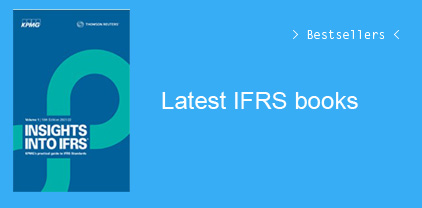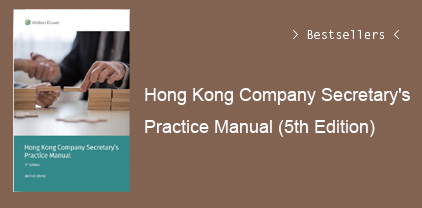Chapter Paragraph
1 General Accounting Considerations 01-82
Introduction 01-03
Authoritative Status and Effective Date 04-12
Transitioning to the New Standard 09-12
Post-Standard Activity 13-17
Overview of FASB ASU No. 2014-09, Revenue from Contracts with Customers 18-35
Step 1: Identify the Contract with a Customer 20-22
Step 2: Identify the Performance Obligations in the Contract 23-26
Step 3: Determine the Transaction Price 27-28
Step 4: Allocate the Transaction Price to the Performance Obligations in the Contract 29-31
Step 5: Recognize Revenue When (or as) the Entity Satisfies a Performance Obligation 32-35
Costs to Obtain or Fulfill a Contract with a Customer 36-40
Incremental Costs of Obtaining a Contract 36-37
Costs of Fulfilling a Contract 38-40
Disclosures 41-42
Other Topics 43-82
Presentation of Contract with a Customer 43
Sale with a Right of Return 44
Warranties 45
Principal Versus Agent 46
Customer Options for Additional Goods or Service — Material Rights 47
Customer’s Unexercised Rights 48
Nonrefundable Upfront Fees 49
Licensing 50
Repurchase Agreements 51
Consignment Arrangements 52
Bill-and-Hold Arrangements 53
Customer Acceptance 54
Third-Party Extended Service Warranty Contracts Within the Scope of FASB ASC 606 55-82
2 General Auditing Considerations 01-206
Introduction 01-05
Auditing the Five-Step Model of FASB ASC 606 06-41
Step 1: Identify the Contract(s) with a Customer 08-15
Step 2: Identify the Performance Obligations in the Contract 16-23
Step 3: Determine the Transaction Price 24-31
Step 4: Allocate the Transaction Price to the Performance Obligations in the Contract 32-38
Step 5: Recognize Revenue When (or as) the Entity Satisfiesa Performance Obligation 39-41
Auditing Considerations in the Adoption and Transition to FASB ASC 606 42-54
General Audit Considerations Over Revenue Recognition 55-66
Risk Assessment and Fraud Risk Under FASB ASC 606 67-100
Audit Planning 68-69
Assignment of Personnel and Supervision 70-71
Establishing an Overall Strategy 72
Audit Risk 73-76
Understanding the Entity and Risk Assessment 77-84
Inquiry 85-86
Reading and Understanding Contracts 87
Reviewing Process Narratives and Process Flow Diagrams 88
Reviewing Internal Control Manuals, Policy Manuals, or Similar Documentation 89-90
Discussion Among the Audit Team 91
Assessing the Risks of Material Misstatement 92-93
Identification of Significant Risks 94-100
Specific Audit Considerations Over Revenue Recognition 101-111
Side Agreements 101-102
Channel Stuffing 103
Related-Party Transactions 104-108
Significant Unusual Transactions 109
Nature of Business and Accounting for Revenue 110-111
Potential Accounting Misstatements 112-120
Identify the Contract with the Customer 114-115
Identify the Performance Obligations in the Contracts 116
Determine the Transaction Price 117
Allocate the Transaction Price to the Performance Obligations 118
Recognize Revenue When (or as) the Entity Satisfies a Performance Obligation 119-120
Consideration of Fraud as it Relates to Revenue 121-128
Discussion Among Engagement Personnel Regarding the Risks of Material Misstatement Due to Fraud 126-127
The Importance of Exercising Professional Skepticism 128
IFRS 15 Versus FASB ASC 606 129
The Role of Controls Over Financial Reporting in Revenue Recognition 130-147
Control Environment 132-137
Risk Assessment 138-141
Control Activities 142-143
Information and Communication 144-145
Monitoring 146-147
Obtaining Audit Evidence 148-176
Types of Substantive Procedures 151-158
Potential Issues in Obtaining Audit Evidence 159
Audit Evidence Related to the Five Steps of Revenue Recognition Under FASB ASC 606 160-176
Auditing Estimates 177-181
Potential Area of Focus — Management Bias 180-181
Management Representations 182-186
Independence 187-196
Consultation 189-191
Situations in Which Auditors Can Assist During Transition 192-196
Disclosures 197-198
Smaller Entities 199
Audit Documentation 200-206
3 Aerospace and Defense Entities 1.01-7.51
Application of the Five-Step Model of FASB ASC 606 1.01-5.53
Step 1: Identify the Contract with a Customer 1.01-1.55
Step 2: Identify the Performance Obligations in the Contract 2.01-2.21
Step 3: Determine the Transaction Price 3.01-3.49
Step 4: Allocate the Transaction Price to the Performance Obligations in the Contract 4.01-4.23
Step 5: Recognize Revenue When (or as) the Entity Satisfied a Performance Obligation 5.01-5.53
Other Related Topics 7.01-7.51
Contract Costs 7.01-7.23
Accounting for Offset Obligations 7.24-7.35
Disclosures — Contracts with Customer 7.36-7.51
4 Asset Management 1.01-7.76
Application of the Five-Step Model of FASB ASC 606 1.01-1.19
Step 1: Identify the Contract with a Customer 1.01-1.19
Revenue Streams 6.01-6.107
Recognition of Contingent Deferred Sales Charges 6.01-6.18
Management Fee Revenue, Excluding Performance Fee Revenue 6.19-6.53
Incentive or Performance Fee Revenue, Excluding Incentive-Based Capital Allocations (Such as Carried Interest) 6.54-6.80
Incentive-Based Capital Allocations 6.81-6.93
Asset Management Arrangement Revenue — Gross Versus Net 6.94-6.107
Other Related Topics 7.01-7.76
Deferred Distribution Commission Expenses (Back-End Load Funds) 7.01-7.10
Management Fee Waivers and Customer Expense Reimbursements 7.11-7.46
Costs of Managing Investment Companies 7.47-7.76
5 Brokers and Dealers in Securities 6.01-7.32
Revenue Streams 6.01-6.144
Commission Income 6.01-6.32
Underwriting Revenues 6.33-6.61
Soft Dollars 6.62-6.77
Investment Banking M&A Advisory Fees 6.78-6.110
Selling and Distribution Fee Revenue 6.111-6.144
Other Related Topics 7.01-7.32
Scope 7.01-7.04
Costs Associated with Investment Banking Advisory Services 7.05-7.20
Principal Versus Agent: Costs Associated with Underwriting 7.21 -7.32
6 Gaming Entities 2.01-7.142
Application of the Five-Step Model of FASB ASC 606 2.01-2.18
Step 2: Identify the Performance Obligations in the Contract 2.01-2.18
Revenue Streams 6.01-6.155
Definitions: The Terms Win and Gross Gaming Revenue 6.01-6.08
Loyalty Credits and Other Discretionary Incentives (Excluding Status Benefits) 6.09-6.50
Accounting for Loyalty Points Redeemed with Third Parties 6.51-6.62
Accounting for Loyalty Co-branding Arrangements 6.63-6.97
Accounting for Management Contract Revenues, Including Costs Reimbursed by Managed Properties 6.98-6.155
Other Related Topics 7.01-7.142
Accounting for Jackpot Insurance Premiums and Recoveries 7.01-7.12
Accounting for Gaming Chips and Tokens 7.13-7.15
Net Gaming Revenue 7.16
Gaming Operator’s Accounting for Base Progressive and Incremental Progressive Jackpot Amounts 7.17-7.23
Promotional Allowances 7.24-7.25
Participation and Similar Arrangements 7.26-7.37
Income Statement Presentation of Wide Area Progressive Operators’ Fees Received From Gaming Entities 7.38-7.68
Recognition of the WAP Operator’s Liability for Base Progressive and Incremental Progressive Jackpot Amounts 7.69-7.74
Accounting for Racetrack Fees 7.75-7.106
Disclosures — Contracts with Customers 7.107-7.130
Gaming Entity’s Costs to Obtain a Management Contract 7.131-7.142
7 Health Care Entities 2.01-7.73
Application of the Five-Step Model of FASB ASC 606 2.01-5.08
Step 2: Identify the Performance Obligations in the Contract 2.01-2.09
Step 5: Recognize Revenue When (or As) the Entity Satisfied a Performance Obligation 5.01-5.08
Revenue Streams 6.01-6.162
Arrangements for Health Care Services Provided to Uninsured and Insured Patients with Self-Pay Balances, Including Co-Payments and Deductibles 6.01-6.43
Third-Party Settlement Estimates 6.44-6.72
Risk Sharing Arrangements 6.73-6.108
Application of FASB ASC 606 to Continuing Care Retirement Community Contracts 6.109-6.162
Other Related Topics 7.01-7.73
Application of the Portfolio Approach 7.01-7.15
Presentation and Disclosure 7.16-7.60
Accounting for Contract Costs 7.61-7.73
8 Not-for-Profit Entities 6.01-7.06
Revenue Streams 6.01-6.98
Tuition and Housing Revenues 6.01-6.69
Not-for-Profit Subscriptions and Membership Dues 6.70-6.98
Other Related Topics 7.01-7.06
Scope 7.01
Bifurcation of Transactions Between Contribution and Exchange Components 7.02-7.06
9 Software Entities 2.01-5.16
Application of the Five-Step Model of FASB ASC 606 2.01-5.16
Step 2: Identify the Performance Obligations in the Contract 2.01-2.29
Step 3: Determine the Transaction Price 3.01-3.36
Step 4: Allocate the Transaction Price to the Performance Obligations in the Contract 4.01-4.51
Step 5: Recognize Revenue When (or as) the Entity Satisfies a Performance Obligation 5.01-5.16
10 Airlines 2.01-7.44
Application of the Five-Step Model of FASB ASC 606 2.01-4.33
Step 2: Identify the Performance Obligations in the Contract 2.01-2.18
Step 4: Allocate the Transaction Price to the Performance Obligations in the Contract 4.01-4.33
Revenue Streams 6.01-6.152
Interline Transactions — Identifying Performance Obligations for Air Travel (Including at the Segment Versus Ticket Level) and Principal Versus Agent Considerations 6.01-6.25
Interline Transactions — Loyalty Payments 6.26-6.44
Brand Name and Customer List in Co-Branded Credit Card Agreements — Timing of Revenue Recognition 6.45-6.71
Consideration of Significant Financing Component in Advance Mile Purchases Under Co-Branded Credit Card Agreements and Miles in Customers’ Accounts 6.72-6.87
Regional Contracts 6.88-6.129
Timing and Classification of Commissions in Interline Transactions 6.130-6.138
Changes in the Volume of Mileage Credits Under a Co-Branded Credit Card Arrangement 6.139-6.152
Other Related Topics 7.01-7.44
Accounting for Contract Costs — Commissions and Selling Costs 7.01-7.05
Accounting for Passenger Taxes and Related Fees 7.06-7.13
Accounting for Passenger Ticket Breakage and Travel Vouchers 7.14-7.28
Accounting for Ancillary Services and Related Fees 7.29-7.37
Accounting for Change Fees 7.38-7.44
11 Engineering and Construction Contractors 1.01-7.61
Application of the Five-Step Model of FASB 606 1.01-5.38
Step 1: Identify the Contract with a Customer 1.01-1.09
Step 2: Identify the Performance Obligations in the Contract 2.01-2.17
Step 3: Determine the Transaction Price 3.01-3.21
Step 5: Recognize Revenue When (or as) the Entity Satisfies a Performance Obligation 5.01-5.38
Other Related Topics 7.01-7.61
Disclosures and Presentation 7.01-7.36
Contract Costs 7.37-7.61
12 Depository Institutions 7.01-7.32
Application of the Five-Step Model of FASB ASC 606 7.01-7.32
Other Related Topics 7.01-7.32
Sale of Non-Operating Assets (Other Real Estate Owned) 7.01-7.20
Scope 7.21-7.32
13 Telecommunications Entities 1.01-7.227
Application of the Five-Step Model of FASB ASC 606 1.01-4.14
Step 1: Identify the Contract with a Customer 1.01-1.18
Step 2: Identify the Performance Obligations in the Contract 2.01-2.35
Step 3: Determine the Transaction Price 3.01-3.19
Determining the Transaction Price 3.20-3.55
Step 4: Allocate the Transaction Price to the Performance Obligations in the Contract 4.01-4.14
Other Related Topics 7.01-7.227
Portfolio Accounting 7.01-7.40
Disclosure and Transition 7.41-7.78
Accounting for Contract Costs 7.79-7.105
Miscellaneous Fees 7.106 -7.133
Wireless Transactions Within the Indirect Channel 7.134-7.178
Material Renewal Rights in Telecommunications Contracts 7.179-7.193
Contract Modifications 7.194-7.227
14 Insurance Entities 7.01-7.16
Other Related Topics 7.01-7.16
Considerations for Applying the Scope Exception in FASB ASC 606-10-15-2 and 606-10-15-4 to Contracts Within the Scope of FASB ASC 944 7.01-7.16
15 Power and Utility Entities 4.01-7.28
Application of the Five-Step Model of FASB ASC 606 4.01-5.26
Step 4: Allocate the Transaction Price to the Performance Obligations in the Contract 4.01-4.06
Step 5: Recognize Revenue When (or as) the Entity Satisfies a Performance Obligation 5.01-5.26
Revenue Streams 6.01-6.49
Accounting for Tariff Sales to Regulated Customers 6.01-6.15
Requirements and Similar Contracts with Variable Volumes 6.16-6.24
Fixed Price Contracts — Consideration of Different Pricing Conventions 6.25-6.49
Other Related Topics 7.01-7.28
Accounting for Blend-and-Extend Contract Modifications 7.01-7.07
Partial Terminations 7.08-7.12
Treatment of Contributions in Aid of Construction (CIAC) 7.13-7.20
Income Statement Presentation of Alternative Revenue Programs 7.21-7.28
16 Time-Share Entities 1.01-7.36
Application of the Five-Step Model of FASB ASC 606 1.01-5.17
Step 1: Identify the Contract with a Customer 1.01-1.37
Step 2: Identify the Performance Obligations in the Contract 2.01-2.39
Step 4: Allocate the Transaction Price to the Performance Obligations in the Contract 4.01
Step 5: Recognize Revenue When (or as) the Entity Satisfies a Performance Obligation 5.01-5.17
Revenue Streams 6.01-6.39
Management Fees 6.01-6.39
Other Related Topics 7.01-7.36
Principal Versus Agent Considerations for Time-Share Interval Sales 7.01-7.19
Contract Costs 7.20-7.36
17 Hospitality Entities 2.01-6.151
Application of the Five-Step Model of FASB ASC 606 2.01-3.17
Step 2: Identify the Performance Obligations in the Contract 2.01-2.18
Step 3: Determine the Transaction Price 3.01-3.17
Revenue Streams 6.01-6.151
Franchise Fees 6.01-6.52
Hotel Management Service Arrangement 6.53-6.105
Owned and Leased Property Revenues 6.106-6.151
18 Entities with Oil and Gas Producing Activities 6.01-7.14
Application of the Five-Step Model of FASB ASC 606 6.01-6.13
Revenue Streams 6.01-6.13
Other Related Topics 7.01-7.14
Derivative Commodity Contracts 7.01
Inventories 7.02-7.07
Joint Operating Agreements 7.08-7.11
Disclosures 7.12-7.14
Appendix
A Overview of Statements on Quality Control Standards
Index of Pronouncements and Other Technical Guidance
Subject Index
































